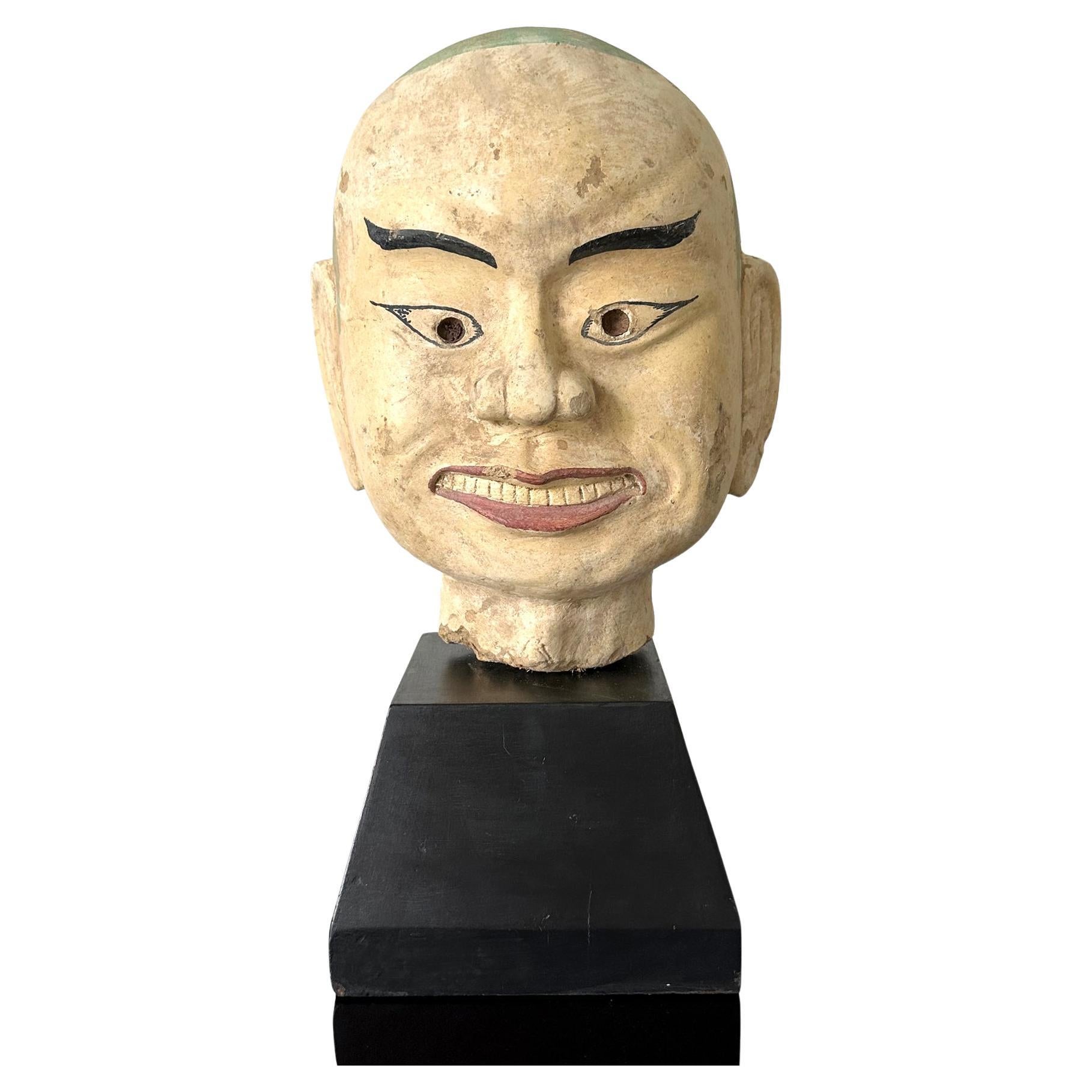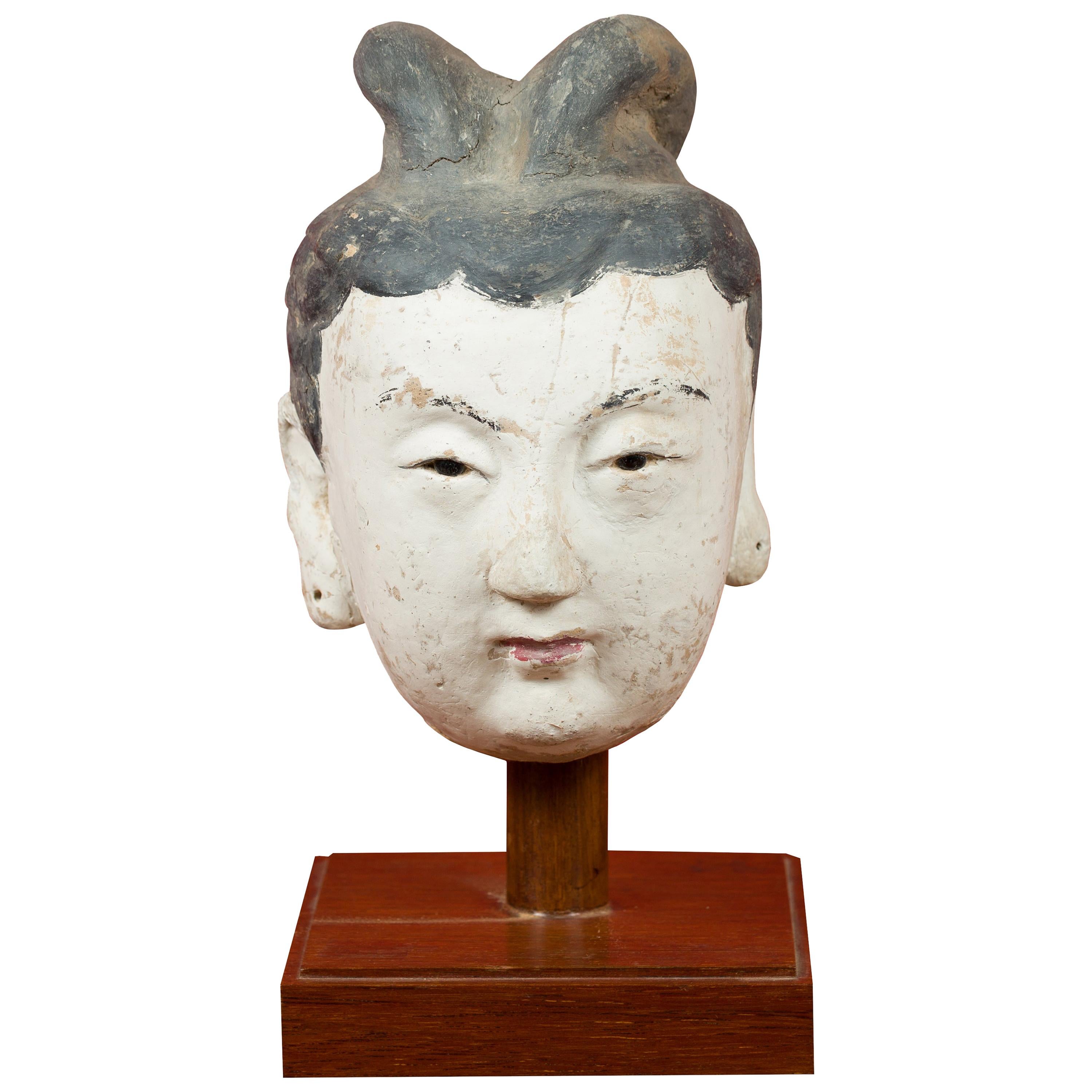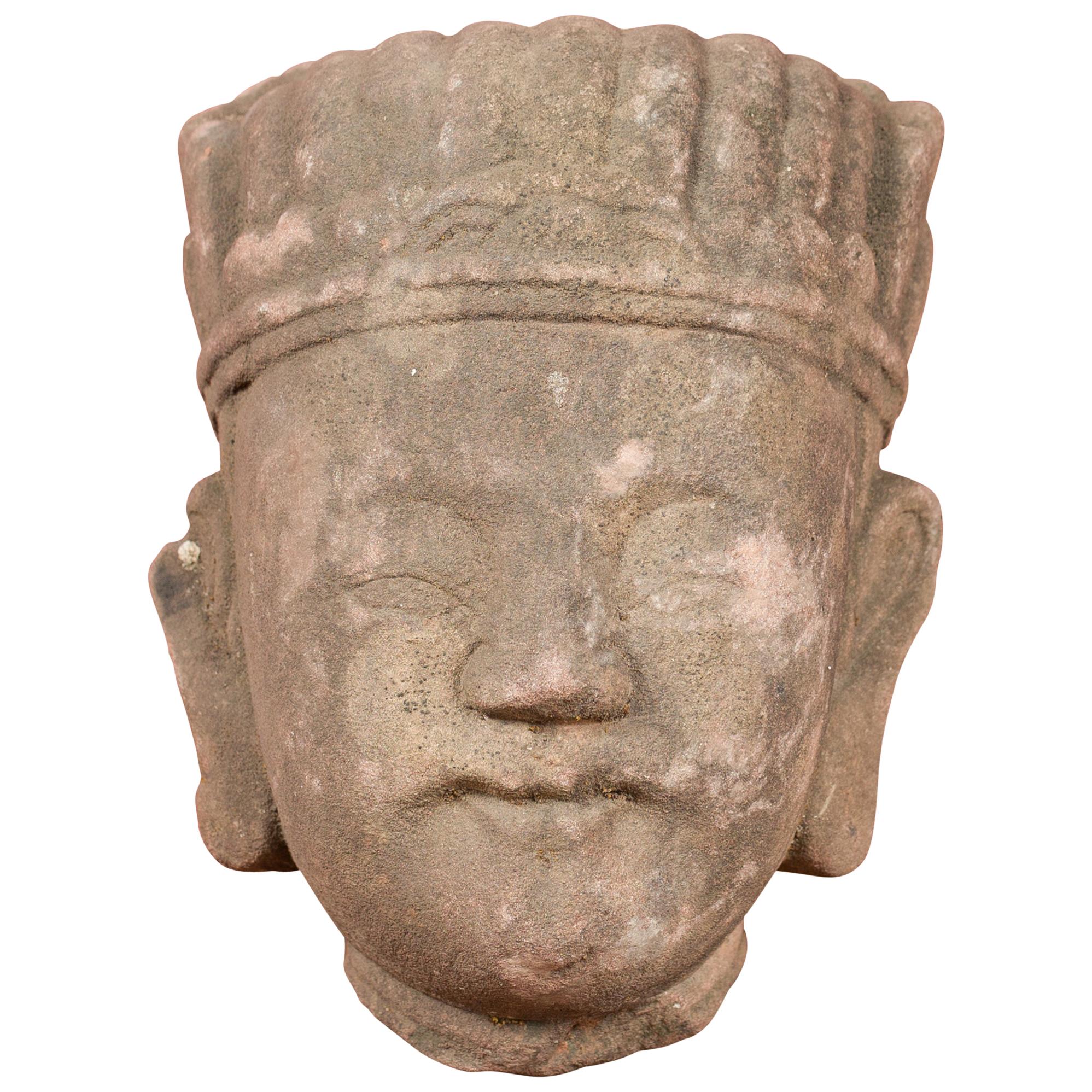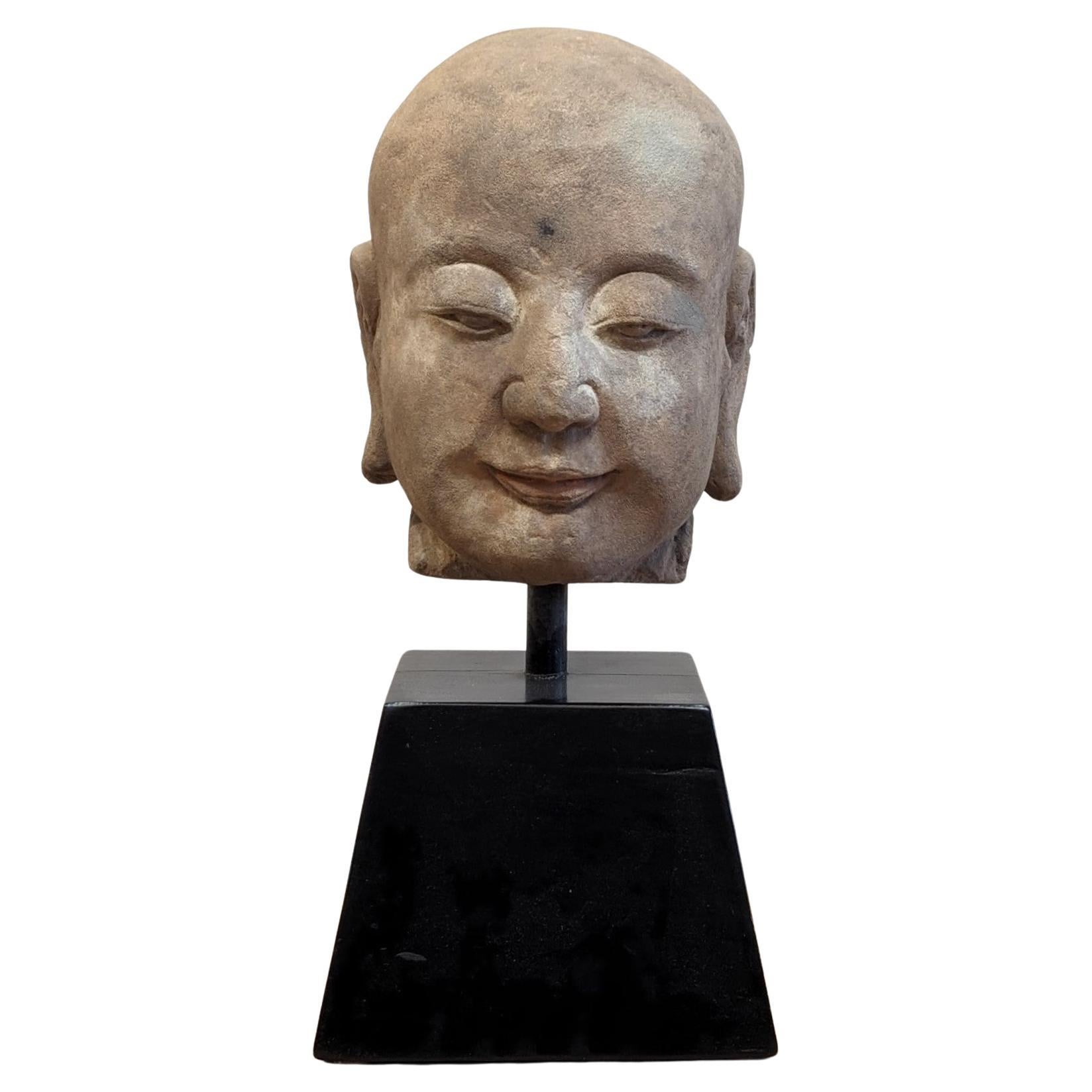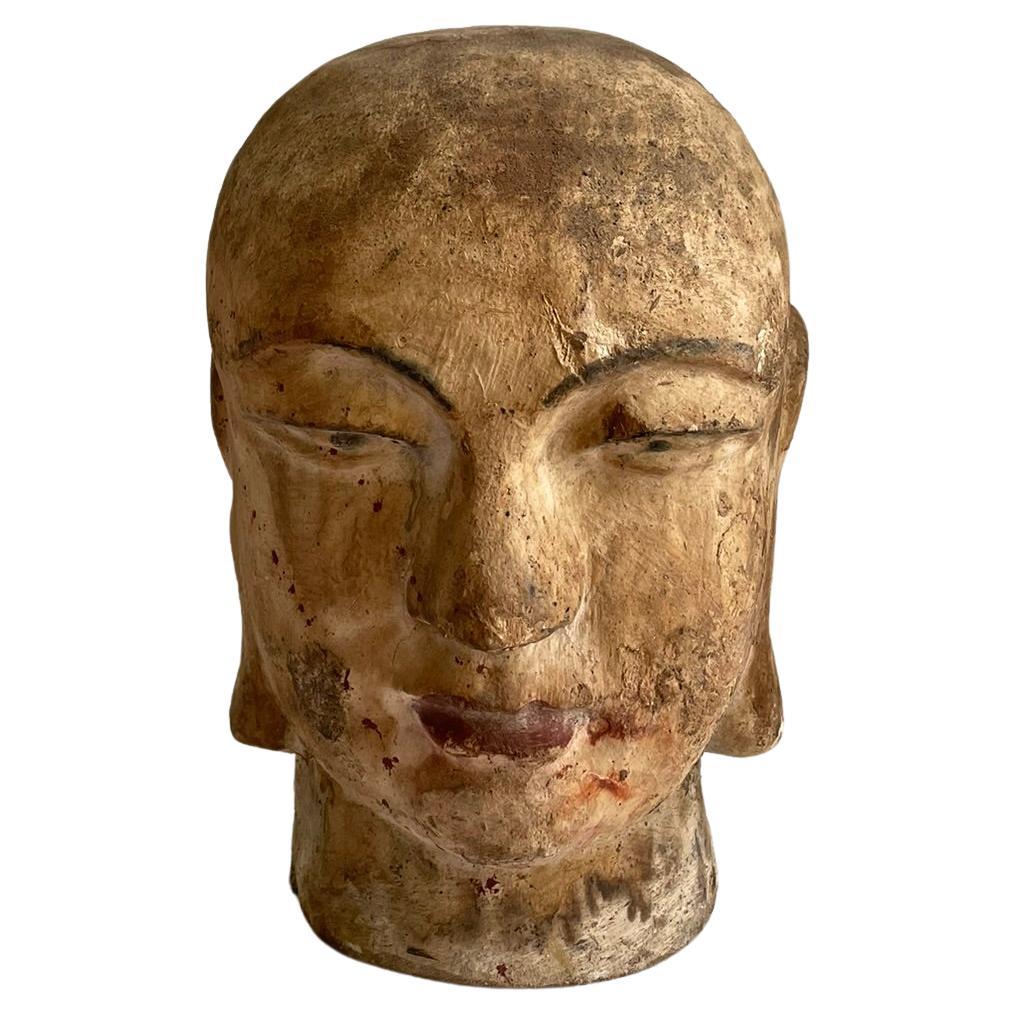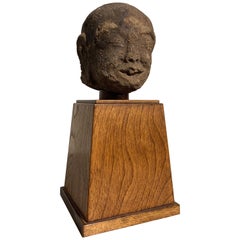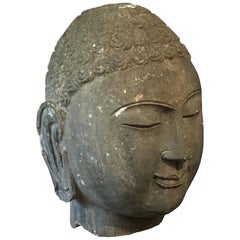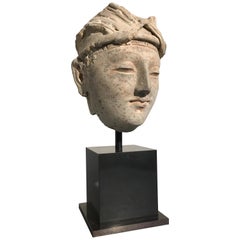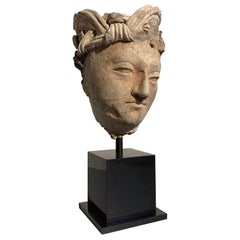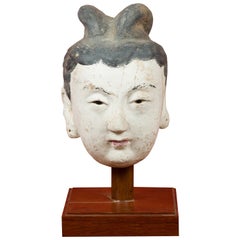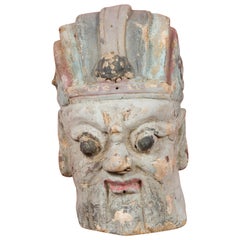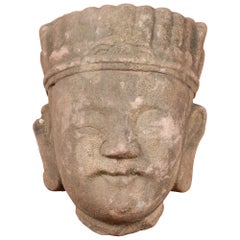Items Similar to Chinese Painted Stucco Head of a Luohan, Song Dynasty, 11th Century, China
Want more images or videos?
Request additional images or videos from the seller
1 of 18
Chinese Painted Stucco Head of a Luohan, Song Dynasty, 11th Century, China
$48,000
£36,440.78
€41,680.48
CA$67,062.96
A$74,588.65
CHF 38,947.88
MX$907,664.54
NOK 497,423.81
SEK 466,495.78
DKK 311,077.40
Shipping
Retrieving quote...The 1stDibs Promise:
Authenticity Guarantee,
Money-Back Guarantee,
24-Hour Cancellation
About the Item
A remarkable Chinese life sized painted stucco head of a luohan, Song, Liao or Jin Dynasty, circa 11th century, China.
The amazingly life-like figure depicts a luohan (sometime spelled lohan), also known as an arhat, one of the original disciples of the Buddha. The elderly man has been molded in stucco with inset glass eyes and painted with idealized, if slightly exaggerated features.
The unidentified luohan sports a bald, or perhaps shaved, domed head above a bulging forehead, symbolizing his vast wisdom. The wrinkles in his furrowed brow, and creases around his eyes add to his realism. The learned man stares out wisely from deep set, heavily lidded inlaid glass eyes that catch the light.
The luohan has high cheekbones and a prominent jawline. His lips full and pursed as if about to speak. The corners of his mouth turned up ever so slightly in a faint smile, causing his gaunt cheeks to dimple charismatically. A series of dots above the upper lip indicate he may originally have sported a mustache of real hair.
This life sized head with extremely realistic features fits into a very narrow time frame of Chinese Buddhist art. Perhaps the most recognized group of large, finely molded Chinese luohan are the Yixian glazed pottery luohans, dated the late 10th or early 11th century, Liao or Jin Dynasty, several of which live in various museums around the world, including the Metropolitan Museum of Art, The British Museum, and the Musee Guimet. Another small group exists in dry lacquer, mostly dated with examples in the collections of the Art Institute of Chicago, the Museum of Fine Arts Boston, and the Nelson Atkins Museum.
Luohan, also known as arhats, were the first disciples of the Buddha. They are considered holy men, and are revered throughout the Buddhist world. The number of luohan ranges by tradition, and can be as few as eight, and as many as one hundred and eight. The generally agreed upon number is eighteen. Each luohan has a specific attribute, and is usually described as having a particular supernatural ability. Unfortunately without his attribute present, we cannot positively identify this particular luohan.
Drilled and mounted on a custom stand.
Measures: H 14.5"
W 8"
D 8.25".
- Dimensions:Height: 14.5 in (36.83 cm)Width: 8 in (20.32 cm)Depth: 8.25 in (20.96 cm)
- Materials and Techniques:
- Place of Origin:
- Period:
- Date of Manufacture:11th Century
- Condition:Wear consistent with age and use. Minor losses. Minor fading. Originally part of a life-sized sculpture. In overall very good condition for age. Minor flaking and cracking to the paint. Probably missing the mustache. Drilled for mounting.
- Seller Location:Austin, TX
- Reference Number:1stDibs: LU894718821742
About the Seller
5.0
Platinum Seller
Premium sellers with a 4.7+ rating and 24-hour response times
Established in 2001
1stDibs seller since 2010
345 sales on 1stDibs
Typical response time: <1 hour
- ShippingRetrieving quote...Shipping from: Austin, TX
- Return Policy
Authenticity Guarantee
In the unlikely event there’s an issue with an item’s authenticity, contact us within 1 year for a full refund. DetailsMoney-Back Guarantee
If your item is not as described, is damaged in transit, or does not arrive, contact us within 7 days for a full refund. Details24-Hour Cancellation
You have a 24-hour grace period in which to reconsider your purchase, with no questions asked.Vetted Professional Sellers
Our world-class sellers must adhere to strict standards for service and quality, maintaining the integrity of our listings.Price-Match Guarantee
If you find that a seller listed the same item for a lower price elsewhere, we’ll match it.Trusted Global Delivery
Our best-in-class carrier network provides specialized shipping options worldwide, including custom delivery.More From This Seller
View AllIndonesian Majapahit Terracotta Head of a Male, circa 14th Century
Located in Austin, TX
A charming head of a young male, Majapahit Empire, region of Trowulan, Eastern Java, Indonesia, 13th-14th century.
The head well sculpted as a smiling, youthful male with buck teet...
Category
Antique 15th Century and Earlier Javanese Tribal Sculptures and Carvings
Materials
Terracotta
Chinese Carved Limestone Head of the Buddha, Mid-20th Century
Located in Austin, TX
A sensitively carved limestone monumental head of the Buddha, China, mid-20th century.
The large carved limestone head displays a quiet sensuousness typical of the Northern Qi style, and follows Northern Qi stylistic conventions, with an oval shaped head covered in pinwheel shaped curls. His full lips...
Category
Mid-20th Century Chinese Busts
Materials
Limestone
Gandharan Stucco Head of a Donor, 4th-5th Century
Located in Austin, TX
A sublime molded stucco head of a young male donor from the ancient region of Gandhara, 4th-5th century.
The youthful nobleman sculpted in an idealized...
Category
Antique 15th Century and Earlier Pakistani Hellenistic Sculptures and Ca...
Materials
Stucco
Gandharan Stucco Head of a Bodhisattva, Region of Hadda, 3rd-5th Century
Located in Austin, TX
A striking Gandharan molded stucco head of a male Bodhisattva, tentatively identified as Manjushri, ancient region of Gandhara, probably Hadda or surrounding area, 3rd-5th century.
The Bodhisattva is sculpted of stucco in an idealized manner as a youthful male, with soft and kind features, a benign expression on his face. He wears an elaborate pleated turban wrapped around his head, with two sweeping lobes at the front.
His turban secured on one side by a small image of a roaring lion. The lion may be read as a reference to Manjushri, the Bodhisattva of Wisdom, who is often depicted as riding or subduing a roaring lion, a metaphor for taming the wild thoughts of the mind.
Manjushri gazes outwards in a beatific manner from almond shaped eyes, a gentle smile on his lips. The eyes at different levels when looking at the sculpture head on, indicating the original placement of the head was meant to be viewed at an angle.
Remnants of pigments to the eyes, nose, mouth and ears.
Mounted on a custom black metal stand.
Hadda was an important center of Buddhist learning in the early history of Greco Buddhist Gandhara, and at one time may have housed a bone relic of the historical Buddha, Shakyamuni. The sculpture and architecture of Hadda followed Hellenistic artistic conventions faithfully, leading some scholars to believe the distinct Greco Buddhist style of Gandhara was first developed in Hadda before spreading to the rest of the region.
The kingdom of Gandhara was situated at a crossroads of trade and cultures. Being one of the last remnants of Alexander the Great's Empire, the inhabitants of the Greco-Bactrian Buddhist kingdom preserved Greek culture and heritage for centuries after the decline of the Greek Empire...
Category
Antique 15th Century and Earlier Afghan Hellenistic Sculptures and Carvings
Materials
Stucco
Burmese Buddha Fragmentary Lacquered Wood Bust, Ava Period, 17th/18th Century
Located in Austin, TX
A mysterious and evocative heavily weathered and fragmentary bust of a Burmese standing Buddha, Ava Period, late 17th or early 18th century, Bu...
Category
Antique Early 18th Century Burmese Sculptures and Carvings
Materials
Metal
Chinese Carved and Lacquered Figure of Zhenwu, Qing Dynasty, 19th century, China
Located in Austin, TX
A powerful Chinese figure of the Taoist diety Zhenwu (Xuanwu), carved and lacquered wood with applied lacquer details, Qing Dynasty, 19th century or earlier, China.
Zhenwu, also kno...
Category
Antique 19th Century Chinese Qing Sculptures and Carvings
Materials
Wood, Hardwood
You May Also Like
Large Terracotta Head of Luohan on Wood Stand from Vietnam
Located in Atlanta, GA
A large and heavy fired clay (terracotta) head of an Arhat (also known as Luohan in Chinese). The followers of Buddha who achieved the enlightenment, statues of Arhats are always fou...
Category
Antique Early 19th Century Vietnamese Other Sculptures and Carvings
Materials
Terracotta, Wood
Ming Period Stucco Head of a Court Lady with Original Paint Mounted on Stand
Located in Yonkers, NY
A Chinese Ming Dynasty period stucco head of a court lady from the 15th or 16th century, mounted on a wooden stand. Crafted in China during the Ming Dynasty, this stucco head is moun...
Category
Antique 16th Century Chinese Ming Sculptures and Carvings
Materials
Wood, Stucco
Qing Dynasty Terracotta Head Sculpture with Headdress and Distressed Finish
Located in Yonkers, NY
An antique Qing Dynasty hand painted terracotta head from the 19th century, with striking features and headdress. This antique Qing Dynasty terracotta head from the 19th century draw...
Category
Antique 19th Century Chinese Qing Sculptures and Carvings
Materials
Terracotta
Qing Dynasty Period 19th Century Hand-Carved Head Sculpture of an Official
Located in Yonkers, NY
A Qing dynasty period hand-carved head sculpture from the 19th century, with headdress. Carved in China during the Qing Dynasty, this 19th-centur...
Category
Antique 19th Century Chinese Sculptures and Carvings
Materials
Stone
19th Century Buddhist Head Sculpture Sandstone
Located in New York, NY
Antique Sandstone Buddhist Head Sculpture. Sandstone Buddha Head 19th century or earlier Buddhist Head Sculpture. Composed of sandstone sculpted by han...
Category
Antique 19th Century Chinese Qing Sculptures and Carvings
Materials
Sandstone
Buddha Head in Carved Painted Wood, Asia 19th Century
Located in Sacile, PN
Ancient chinese figure of peaceful Buddha head carved in wood.
Beautiful signs of age to keep.
Category
Antique Late 19th Century Asian Busts
Materials
Wood
